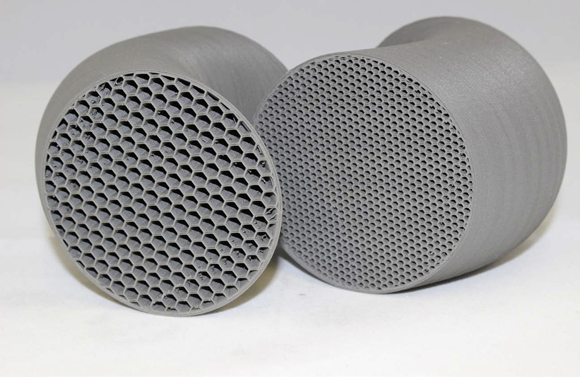Ultrafuse 316LX: BASF's
MIM technology adapted for Additive Manufacturing
31st Jul, 2017

BASF’S Ultrafuse 316LX is suited to a broad range of applications for
functional prototyping and small series production (Courtesy BASF)
BASF SE, the global leader in feedstock production for
Metal Injection Molding, has taken
a step into the world of metal Additive Manufacturing (3D Printing) with
the launch of Ultrafuse 316LX for use in Fused Filament Fabrication (FFF)
systems. The material has been designed for the production of complex
metal components.
Ultrafuse 316LX is metal-polymer composite filament with a non-slip
surface, allowing its application in any bowden or direct drive
extruder. Its high flexibility allows it to be funnelled through complex
idler pulleys as well as guide roller filament transportation systems.
Once formed, the parts undergo the same debinding and sintering process
as used for parts produced using BASF’s Catamold® feedstock for Metal
Injection Molding. The technology has been in commercial use worldwide
since the late 1980s.
In this process, catalytic debinding removes polymer binder from the
part and sintering in pure hydrogen or a vacuum results in a finished
metal component that is close to full density. The whole process is said
to be faster and less expensive than offered by existing Powder Bed
Fusion (PBF) systems.
Ultrafuse 316LX is available in 1.75 and 2.85 mm diameter filaments.
According to BASF, no changes to the FFF hardware are required to
process the material. Currently only a 316L stainless steel option
exists, but BASF states that other metal options will be developed.
The filament is said to be suited to a broad range of applications for
functional prototyping and small series production. BASF lists various
applications including watches, decorative parts, medical equipment and
parts for the food and chemical industry.

